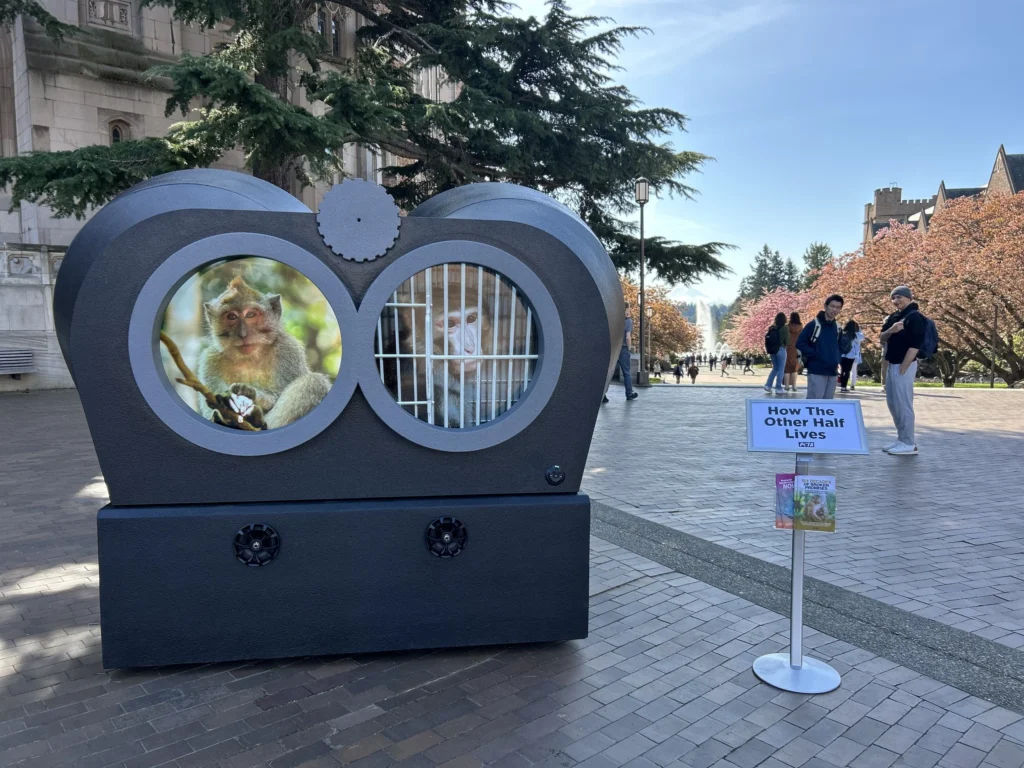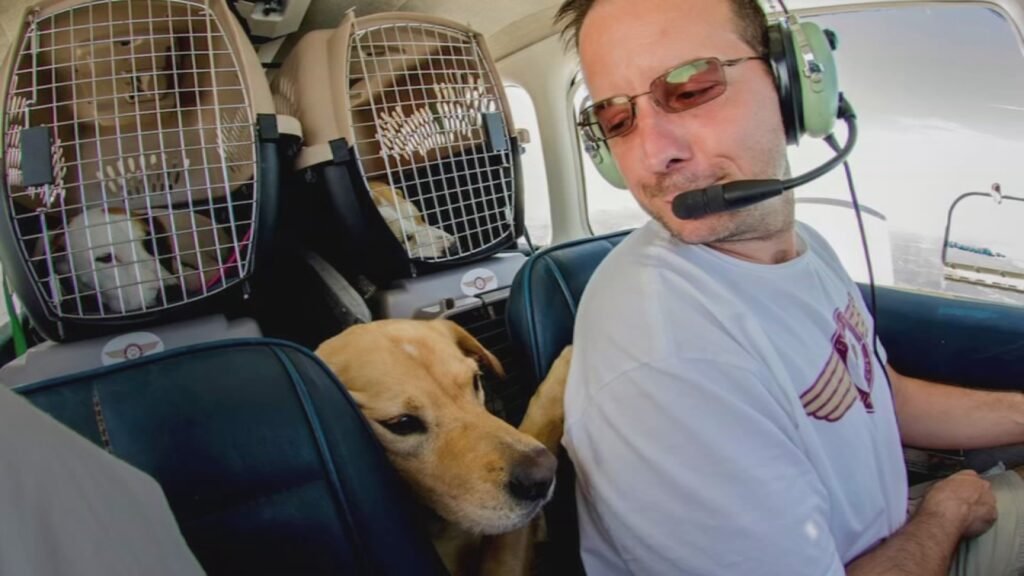“How the Other Half Lives” installation contrasts monkeys thriving in nature with those trapped in federally funded laboratories
Seattle pedestrians were recently greeted by a surreal and haunting sight: a towering pair of binoculars standing tall in the heart of the city. But this wasn’t a quirky art piece—it was the first stop on PETA’s nationwide How the Other Half Lives tour, a bold installation designed to shed light on the hidden reality of primate research in the U.S.

With one lens revealing monkeys swinging freely through lush jungles and the other peering into sterile, confined laboratory cages, the immersive display invites viewers to confront a difficult truth: while some primates live as nature intended, others suffer behind closed doors, in the name of science and under the veil of taxpayer-funded research.
And the first institution in the spotlight? The University of Washington.
What the University Doesn’t Want You to See
The university is home to the Washington National Primate Research Center, one of seven federally funded centers conducting research on nonhuman primates. These facilities collectively house thousands of monkeys—many subjected to invasive procedures, extreme isolation, and psychological trauma.
According to internal documents obtained by PETA, some of these experiments involve maternal deprivation, chemical injections, and restraint tests that critics say yield questionable scientific value.
“People assume cruelty only happens in distant places, but it’s happening right here, in publicly funded labs,” said Kathy Guillermo, Senior Vice President of PETA’s Laboratory Investigations Department. “Our installation is designed to break the illusion and bring the reality out into the open.”
A Message in Plain Sight
The binoculars themselves are more than a visual gimmick—they’re a powerful metaphor. On one side, viewers see footage of monkeys foraging, socializing, and thriving in the wild. On the other, they see animals confined to steel cages, their movements restricted, their eyes vacant.
It’s a clear, emotionally charged contrast that cuts through apathy and demands attention.
Follow the Money, Follow the Change
PETA’s campaign also calls for an end to taxpayer support for National Primate Research Centers. The U.S. government pours hundreds of millions of dollars into these institutions annually—money that could, according to advocates, be redirected toward non-animal research alternatives that are both humane and scientifically advanced.
“Saving money and saving monkeys aren’t mutually exclusive,” Guillermo said. “We’re urging people to contact lawmakers and demand an end to this outdated and ethically indefensible funding model.”
The Road Ahead
The How the Other Half Lives exhibit will travel across the country, appearing in front of universities and research centers to raise public awareness and pressure institutions to adopt cruelty-free practices.
It’s part protest, part performance, and all purpose.
As more Americans begin to scrutinize the hidden costs of animal experimentation, exhibits like this are playing a vital role in shifting public opinion—and perhaps, in reshaping the future of science itself.
Want to help?
Visit PETA.org to learn more about the campaign and how to take action. You can also sign petitions, contact your representatives, and explore ways to support animal-free research.


